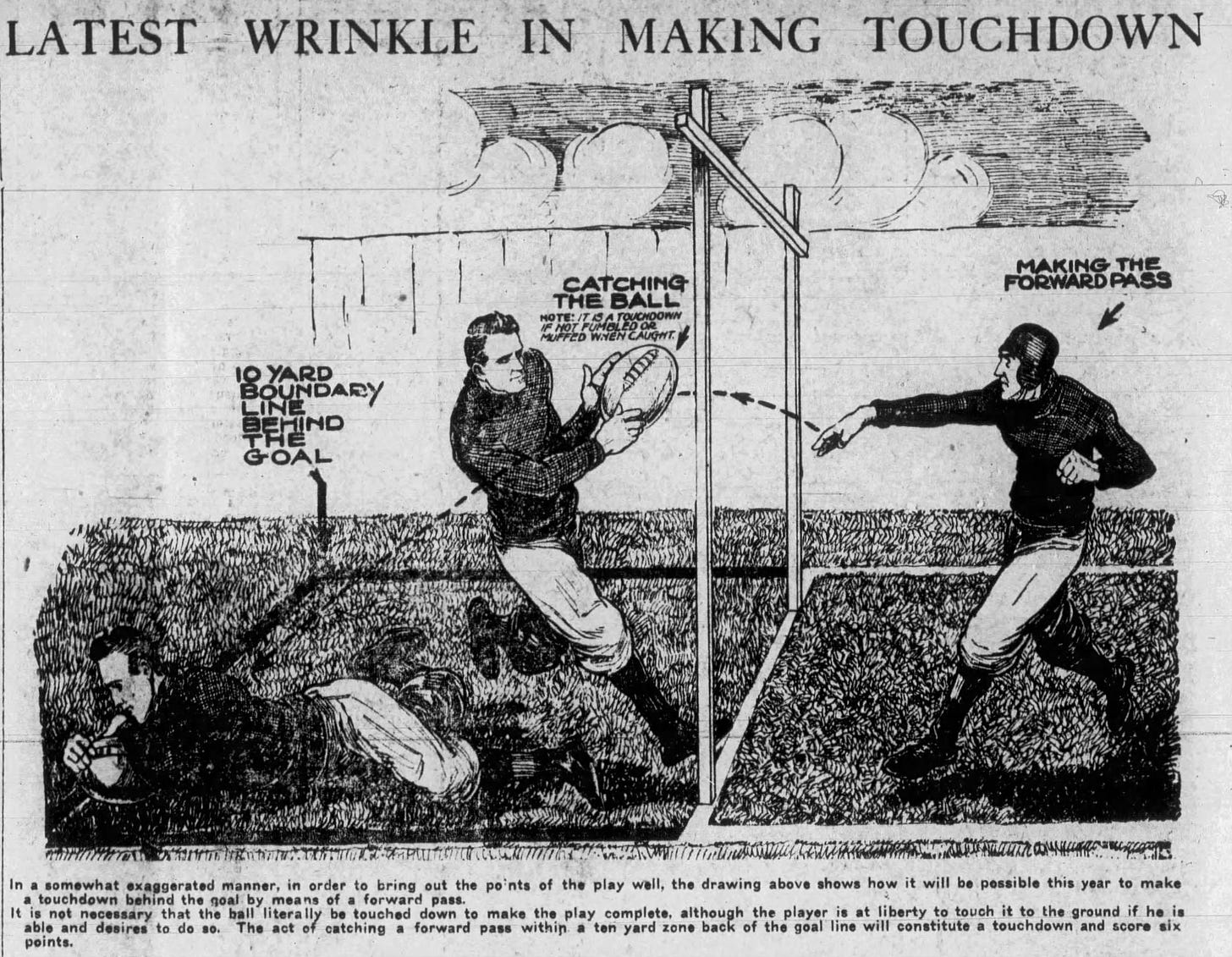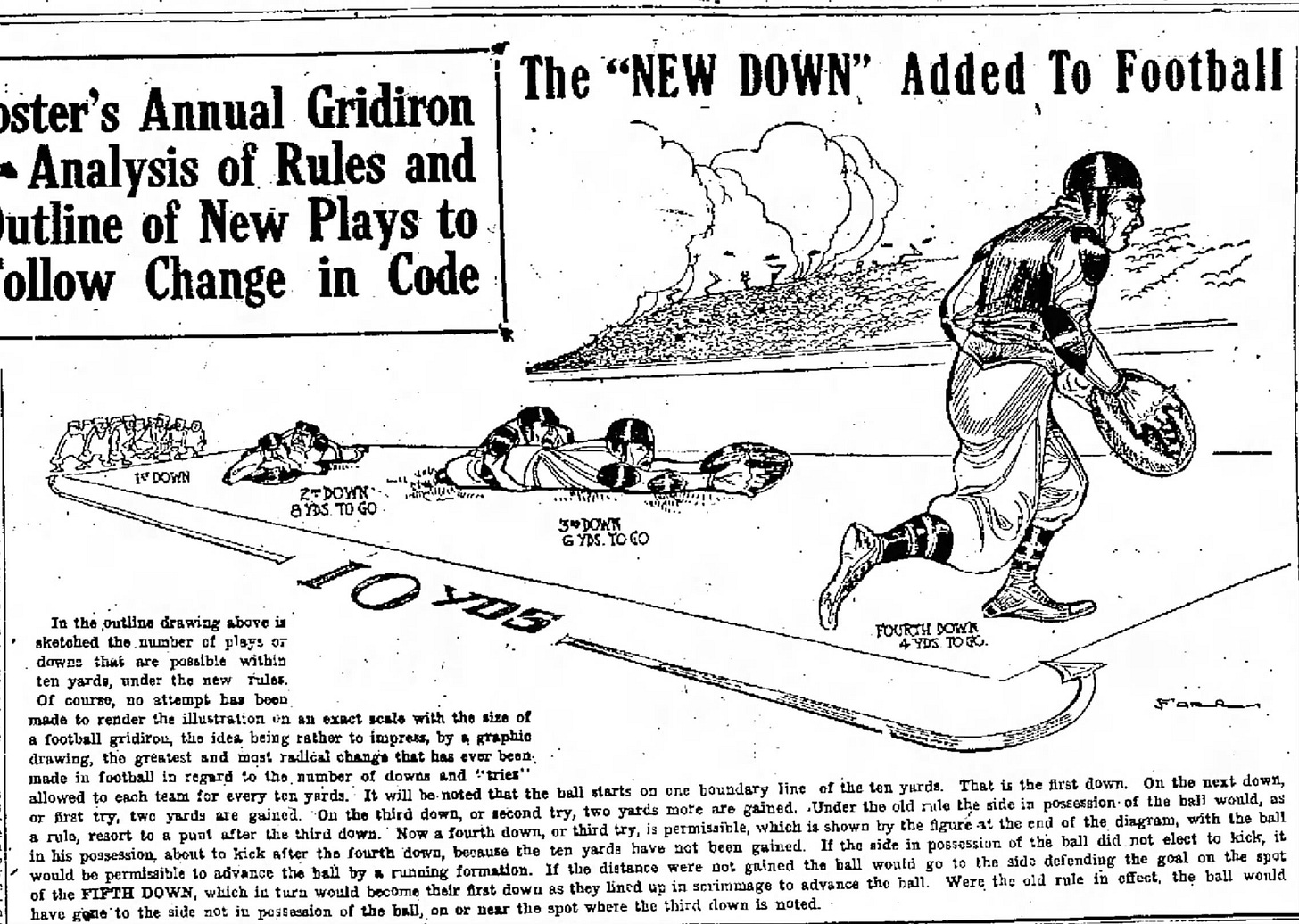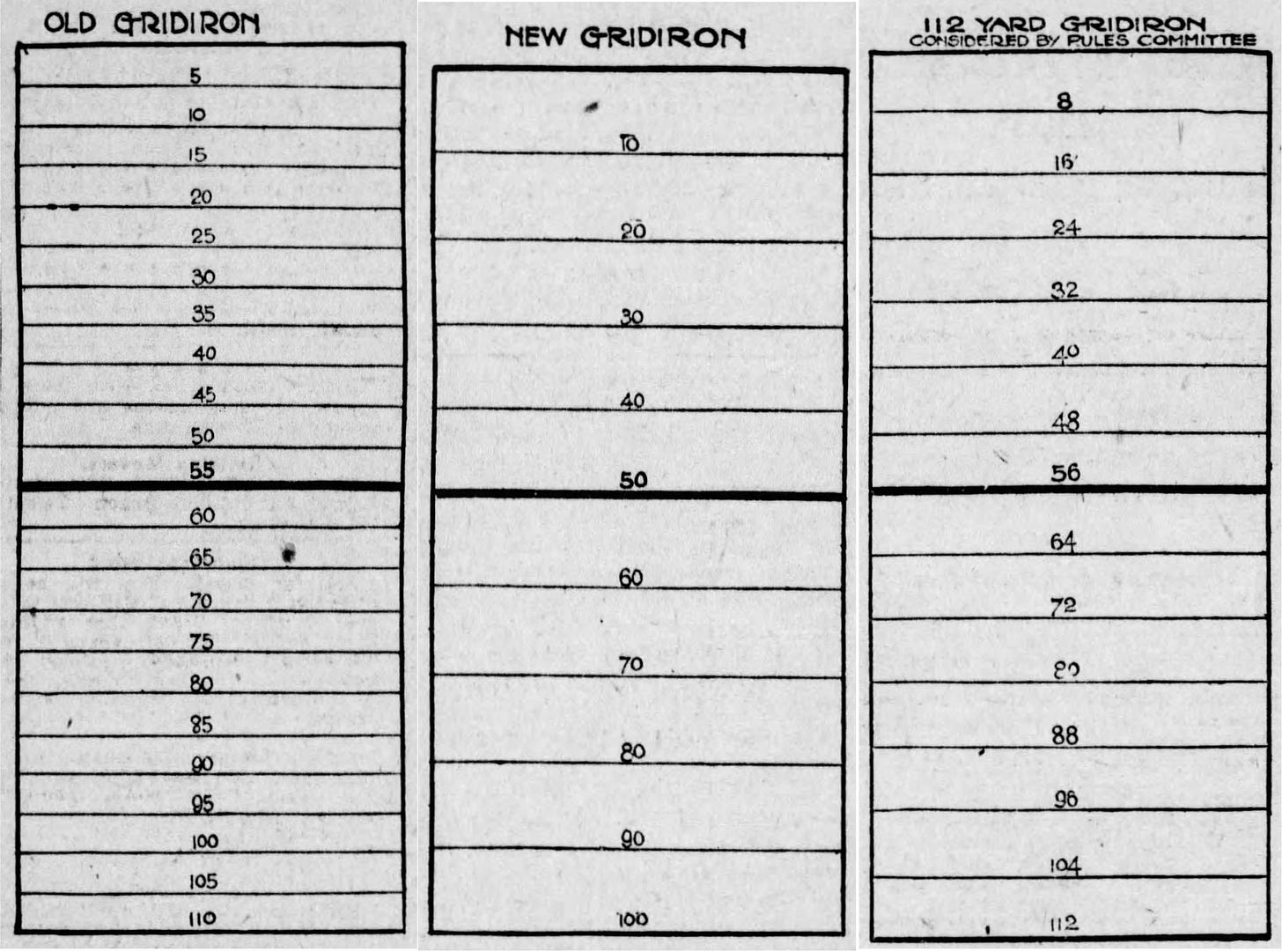Today's Tidbit... John B. Foster And The 112-Yard Field
John B. Foster was best known for his involvement in baseball as an executive with the New York Giants and later as editor of Spalding's Official Base Ball Guide. Still, he wrote extensively on football, with many columns entering syndication and publishing nationwide. As a syndicated columnist, he had the time and budget to have his articles accompanied by illustrations.
Foster ran a series covering the many 1912 rule changes, and several columns included illustrations to convey the changes. One reflected the new rule allowing forward passes to be thrown over the goal line and into the newly-created end zones.

A second column told of shortening the field from 110 yards to 100 yards to ensure that gridirons with twenty yards of defined end zones fit into existing stadiums. Whereas kickoffs had previously occurred from midfield, 55 yards from either goal line, the kickoff shifted to the kicking team's 40-yard line, sixty yards from the opposing goal line.
Another set of illustrations accompanied an article about the new field and the change from three downs to gain 10 yards to four downs to gain 10 yards.
Besides pointing out the extra down offenses had in 1912, the yardage gained by the offensive team on first, second, and third downs reflected research Foster conducted using news reports of numerous football games. Back then, newspapers often had lengthy articles concerning big games, supplemented by play-by-play accounts. Foster used these accounts to determine that teams averaged only two yards per down in 1909, 1910, and 1911, leading him to argue that teams should have four downs to make eight yards. Foster took the eight-yard idea further by arguing for a field marked with stripes every eight yards and 112 yards long. Other than the previous convention that teams needed to gain five or ten yards in three downs and the field had corresponding lines every five yards, there was no need to change the field markings or length, but that was Foster's argument.
During their consideration of the new rules for 1912, the committee looked at Foster's idea. Still, they rejected it, and by making numerous other rule changes, the two-yard average from previous seasons no longer applied. So, the American game transitioned from three downs to four downs to gain ten yards, while our Canadian friends continued playing three-down football, creating a difference that remains today.
Football Archaeology is reader-supported. Click here to buy one of my books or otherwise support the site.





What a story! Perhaps we should refer to him as Fourth Down Foster
The end zone is the second most important innovation, besides only the forward pass.